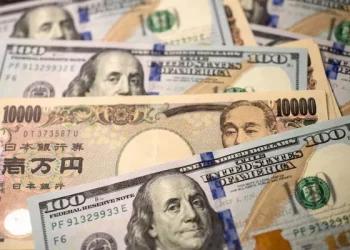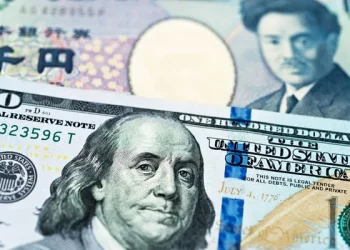The foreign exchange market, or Forex, is the largest and most liquid financial market in the world. It is where currencies from various countries are traded against one another, and their values fluctuate based on a variety of economic factors. For individuals or businesses engaged in international trade, remittances, or investments, understanding how currency values change and how much one currency is worth in relation to another is essential. In this article, we will explore the process of converting 4,000 Australian Dollars (AUD) into British Pounds (GBP) and understand the factors that influence exchange rates between the two currencies.
Understanding Exchange Rates
Before diving into the specifics of converting 4,000 Australian Dollars to British Pounds, it’s important to understand what an exchange rate is. Simply put, an exchange rate is the price of one currency in terms of another. For example, if the exchange rate between AUD and GBP is 0.52, it means that 1 Australian Dollar is worth 0.52 British Pounds.
Exchange rates fluctuate constantly due to a wide range of factors including supply and demand, economic data, geopolitical events, and central bank policies. In the context of Forex trading, these fluctuations are crucial for traders who buy and sell currencies based on expected future movements in exchange rates.
The Role of the Forex Market
The Forex market operates 24 hours a day, five days a week, allowing currencies to be traded worldwide. The Australian Dollar and the British Pound are both actively traded currencies in this market, and their exchange rate can fluctuate based on a variety of market conditions.
Factors That Influence the AUD/GBP Exchange Rate
Economic Data: Economic reports such as GDP growth, employment data, inflation, and trade balances can significantly impact currency values. If Australia reports strong economic growth, this may lead to an appreciation of the Australian Dollar against the British Pound. Conversely, if the UK reports strong economic data, the Pound may appreciate relative to the Australian Dollar.
Interest Rates: Central banks such as the Reserve Bank of Australia (RBA) and the Bank of England (BoE) control interest rates, which are key drivers of currency values. Higher interest rates typically attract foreign investment, leading to an increase in demand for the currency. If the BoE raises interest rates while the RBA keeps theirs unchanged, the British Pound may strengthen relative to the Australian Dollar.
Geopolitical Events: Political stability and events can influence currency values. For instance, political uncertainty or a financial crisis in either the UK or Australia could lead to volatility in the exchange rate. Brexit, the UK’s exit from the European Union, is an example of a significant geopolitical event that impacted the GBP’s value for several years.
Market Sentiment: Market sentiment refers to the overall mood of investors towards a particular currency or economy. If investors are optimistic about Australia’s economic prospects, the Australian Dollar may rise against other currencies, including the British Pound.
Commodity Prices: Australia is a major exporter of commodities like iron ore, coal, and natural gas. As a result, the Australian Dollar often moves in line with commodity prices. When commodity prices rise, the AUD tends to appreciate, and when they fall, the AUD can depreciate. This can have a direct impact on the AUD/GBP exchange rate.
How to Convert 4,000 AUD to GBP
The process of converting 4,000 Australian Dollars to British Pounds is straightforward, but the key is understanding the current exchange rate between the two currencies. Exchange rates are determined by the Forex market, and they change every second based on real-time trading.
To calculate how much 4,000 AUD is in GBP, you need the current AUD/GBP exchange rate. For example, if the exchange rate is 0.52, the calculation would be:
4,000 AUD×0.52=2,080 GBP
So, at an exchange rate of 0.52, 4,000 Australian Dollars would convert to 2,080 British Pounds.
However, exchange rates do not remain static. They can fluctuate from one moment to the next, and the rate you get when you exchange currency depends on several factors including the method of conversion, such as:
Bank Conversion Rates: When you convert currency through a bank, the exchange rate may include a margin added by the bank. This means you may receive a slightly less favorable rate than the market rate.
Currency Exchange Services: Bureau de change or online exchange services often offer competitive rates, but they may charge fees or commissions, which can impact the amount you receive.
Forex Trading Platforms: Some traders may prefer using Forex brokers and platforms to exchange currency, which can provide live market rates, but this may also involve trading costs.
Given the dynamic nature of exchange rates, it’s important to check the current rate before proceeding with any exchange, especially when dealing with large amounts like 4,000 AUD.
Using a Currency Converter
If you don’t want to manually calculate the exchange rate, online currency converters can provide real-time rates and give you a quick estimate of how much your 4,000 AUD will be in British Pounds. Many currency conversion websites and apps pull data from live Forex markets, allowing you to get the most up-to-date information at any given time.
Converting AUD to GBP: A Real-World Example
Let’s assume that the current exchange rate for AUD to GBP is 0.52, and you want to convert 4,000 AUD. Using the exchange rate, the calculation is as follows:
4,000 AUD×0.52=2,080 GBP
This means that 4,000 Australian Dollars would give you 2,080 British Pounds at an exchange rate of 0.52.
However, if the exchange rate changes to 0.55, the same 4,000 AUD would give you:
4,000 AUD×0.55=2,200 GBP
As you can see, even a small change in the exchange rate can have a noticeable impact on the amount of GBP you receive when exchanging 4,000 AUD.
Why Exchange Rates Fluctuate
The fluctuation of exchange rates is a natural part of the Forex market. The price of one currency relative to another is influenced by various economic, political, and market factors. Understanding these factors is crucial for both traders and individuals involved in currency exchange. Let’s explore some of the key reasons why the exchange rate between AUD and GBP changes:
Economic Differentials: If Australia’s economy is growing faster than the UK’s, investors may be more inclined to invest in Australian assets, leading to increased demand for the AUD. This increased demand would cause the AUD to appreciate relative to the GBP.
Monetary Policy: The RBA and the BoE set interest rates to manage inflation and control economic growth. If the BoE raises interest rates while the RBA keeps theirs unchanged, the GBP could appreciate, making the AUD cheaper to buy.
Political Risk: Political events such as elections, trade negotiations, or geopolitical tensions can cause investors to shift their capital from one currency to another. For example, uncertainty surrounding Brexit led to significant volatility in the GBP for several years, affecting its value relative to other currencies, including the AUD.
Global Market Sentiment: Sometimes the value of a currency is driven more by global market sentiment than by domestic factors. For example, during periods of market uncertainty, investors may seek the relative safety of the British Pound, causing it to strengthen against the Australian Dollar.
Commodity Prices: As mentioned earlier, Australia is a major exporter of commodities, and fluctuations in the prices of these goods can directly affect the value of the Australian Dollar. If global commodity prices rise, the Australian economy benefits, leading to an appreciation of the AUD.
Converting Currency: Practical Considerations
While understanding the exchange rate is essential when converting currency, there are practical considerations to keep in mind. If you are exchanging large sums of money, like 4,000 AUD, here are a few tips to ensure you get the best value:
Shop Around: Different currency exchange services and financial institutions may offer different rates. It’s worth comparing rates to get the most favorable deal.
Consider Fees and Charges: Always account for any service fees or commissions when converting currency. These costs can add up quickly, particularly if you are converting large amounts.
Timing is Important: Exchange rates can fluctuate throughout the day, so timing can be crucial. Some Forex traders take advantage of short-term volatility to make quick profits, while others may hold off on exchanges until the rate moves in their favor.
Using Forex Platforms: If you are familiar with Forex trading, you might choose to use an online trading platform to execute the currency exchange. These platforms typically offer real-time rates, allowing you to take advantage of favorable price movements.
Conclusion
Converting 4,000 Australian Dollars to British Pounds is a simple process, but it requires an understanding of the exchange rate and how it fluctuates. The value of the AUD relative to the GBP is influenced by many factors, including economic data, central bank policies, geopolitical events, and global market sentiment.
By keeping an eye on exchange rates, considering practical factors such as fees and service charges, and using currency converters or Forex trading platforms, you can ensure that you get the best deal when exchanging your money. Whether you’re a trader, a business owner, or an individual making an international purchase or investment, understanding how to navigate the foreign exchange market is a crucial skill.
Related Topics:


























